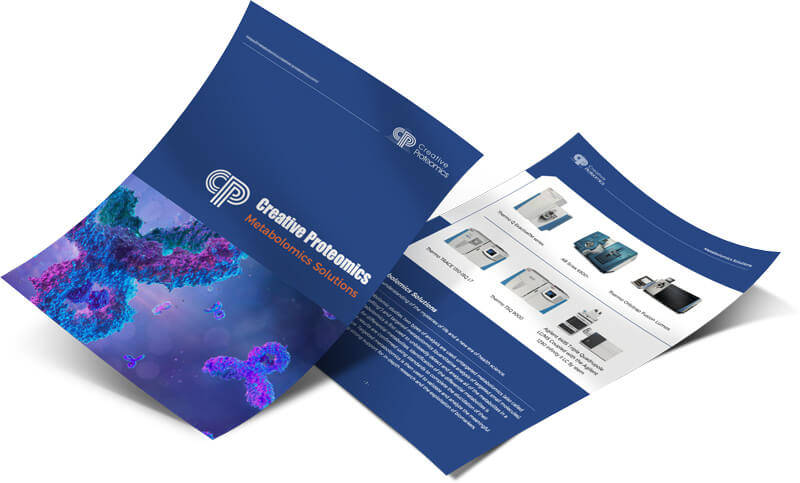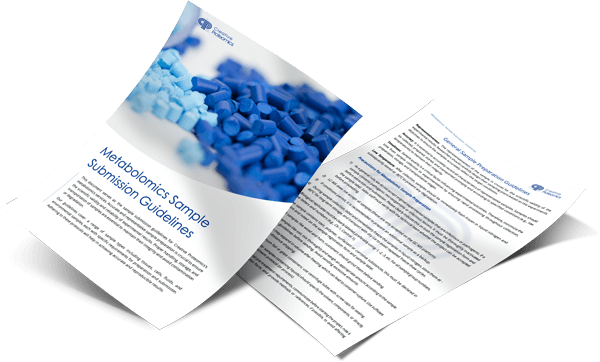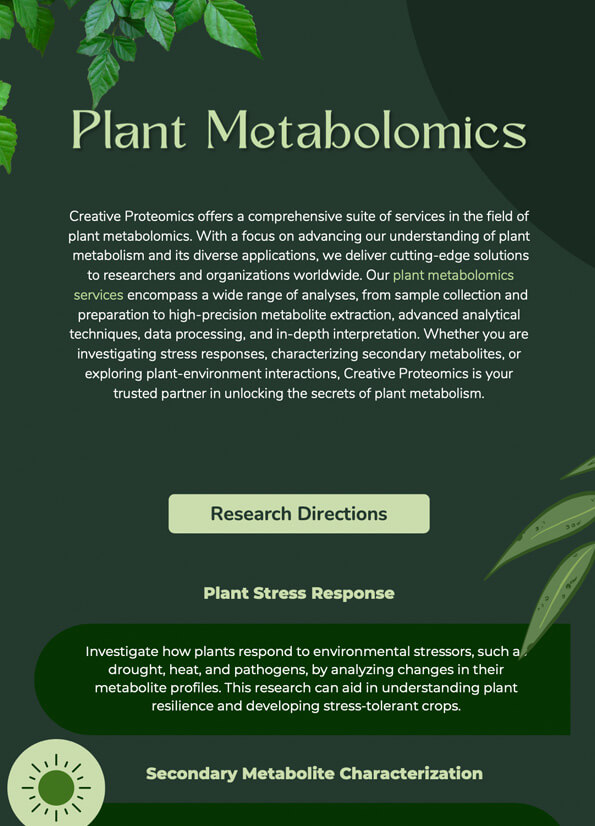- Service Details
- Demo
- Case Study
- FAQ
- Publications
What is Indole-3-acetic Acid?
Indole-3-acetic acid (IAA) is the most well-known and widely distributed natural auxin, a class of plant hormones for plant growth and development. Structurally, IAA is a derivative of indole, an aromatic heterocyclic organic compound with a bicyclic structure, which includes a carboxymethyl group. The presence of this functional group makes IAA a highly bioactive molecule capable of influencing a broad range of physiological and developmental processes in plants.
Functions of IAA in Plants
Cell Elongation and Division: One of the primary functions of IAA is to promote cell elongation and division, particularly in the stem and root tissues. IAA activates proton pumps in the cell membrane, leading to cell wall loosening and expansion. This effect is vital for shoot elongation, root development, and overall plant size.
Apical Dominance: IAA regulates apical dominance, the phenomenon where the main central stem of the plant grows more robustly than the side shoots. The high concentration of IAA at the apex inhibits lateral bud growth, directing resources toward vertical growth.
Root Initiation and Growth: IAA promotes the formation of lateral and adventitious roots, crucial for the plant's ability to explore soil for water and nutrients. It enhances root hair development, which increases surface area for nutrient absorption.
Vascular Tissue Differentiation: IAA influences the differentiation of vascular tissues such as xylem and phloem, which are critical for transporting water, nutrients, and photosynthates throughout the plant. This function is essential for the establishment of healthy, functional vascular systems in plants.
Indole-3-acetic Acid Analysis Offered by Creative Proteomics
In Vitro IAA Quantification: Comprehensive measurement of IAA levels in plant and tissue cultures to monitor hormone concentrations during experiments.
In Vivo IAA Monitoring: Accurate detection and quantification of IAA levels within living plants, aiding in the study of real-time hormonal fluctuations and stress responses.
Environmental Microbiome IAA Analysis: Investigating IAA production by bacteria and fungi, with potential applications in sustainable agricultural practices and microbial ecology.
Custom Research Solutions: Tailored IAA analysis for unique experimental setups, offering flexibility to address specific research questions and requirements.

Brochures
Metabolomics Services
We provide unbiased non-targeted metabolomics and precise targeted metabolomics services to unravel the secrets of biological processes.
Our untargeted approach identifies and screens for differential metabolites, which are confirmed by standard methods. Follow-up targeted metabolomics studies validate important findings and support biomarker development.
Download our brochure to learn more about our solutions.
Technology Platforms for Indole-3-acetic Acid Assay
At Creative Proteomics, our Indole-3-acetic acid (IAA) analysis is built on advanced instrumentation to ensure precision, sensitivity, and reproducibility across a wide range of sample types. Our primary technology platform is High-Performance Liquid Chromatography (HPLC), integrated with UV detection at 254 nm, which is ideally suited for the quantitative analysis of IAA in complex biological matrices.
High-Performance Liquid Chromatography (HPLC) with UV Detection
HPLC is a powerful separation technique, essential for analyzing non-volatile and thermally unstable compounds like IAA. At Creative Proteomics, we use Agilent 1260 Infinity II HPLC systems, renowned for their high resolution and throughput. Key features include:
- High Sensitivity and Selectivity: The HPLC system, combined with UV detection, allows precise identification of IAA, even in trace amounts, while effectively separating it from structurally similar compounds or impurities present in the sample.
- Quantitative Accuracy: The use of photodiode array detectors (PDA) ensures high-precision UV absorbance measurements at 254 nm, where IAA exhibits strong absorption, enabling accurate quantification of IAA levels.
- Versatile Sample Compatibility: Our HPLC system can handle various sample types such as plant tissues, extracts, and culture media, providing flexibility for different research applications.
Complementary Techniques: Mass Spectrometry (MS)
For enhanced sensitivity and structural confirmation, we offer HPLC-MS services using Thermo Scientific™ Q Exactive™ Hybrid Quadrupole-Orbitrap MS. This high-resolution mass spectrometer provides:
- Unmatched Sensitivity: Ideal for detecting ultra-low concentrations of IAA in complex samples.
- Precise Molecular Characterization: Allows accurate determination of molecular weight and fragmentation patterns, confirming the identity of IAA and distinguishing it from similar molecules.
HPLC-MS is particularly useful for samples with low IAA concentrations or where precise molecular identification is critical.
Data Integrity and Automation
Our analysis platform is fully integrated with Empower 3 Chromatography Data System (CDS), which automates data acquisition, processing, and reporting. This ensures:
- Minimized Human Error: Automated workflows reduce manual handling, improving data reliability.
- High Throughput and Scalability: The system handles large datasets efficiently, ensuring rapid analysis without compromising accuracy.
Sample Requirements for Indole-3-acetic Acid Analysis
| Sample Type | Minimum Amount Required | Preparation Instructions | Shipping Conditions |
|---|---|---|---|
| Plant Tissues | 100 mg (fresh or dried) | Clean of soil and debris; store frozen | Ship on dry ice (-20°C) |
| Culture Media | 1 mL | Sterile-filtered to remove particulates | Ship refrigerated (4°C) |
| Environmental Samples | 10 mL | Pre-filtered to remove solids/debris | Ship refrigerated (4°C) |
| Tissue Extracts | 500 µL | Solvent-free; concentrated; freeze-dried | Ship on dry ice (-20°C) |
| Microbial Cultures | 1 mL | Centrifuge to remove cells; store frozen | Ship frozen (-20°C) |

PCA chart

PLS-DA point cloud diagram

Plot of multiplicative change volcanoes

Metabolite variation box plot

Pearson correlation heat map
Plant Growth Promotion, Phytohormone Production and Genomics of the Rhizosphere-Associated Microalga, Micractinium rhizosphaerae sp. nov.
Journal: Plants
Published: 2023
Background
Microalgae are integral components of soil and plant microbiomes, contributing to soil health and promoting plant growth. This study focuses on the functional and genomic characterization of a newly identified microalga strain, NFX-FRZ, isolated from the rhizosphere of a wild Ficus tree in Portugal. The findings reveal that this strain not only binds to tomato plant tissues and promotes growth but also synthesizes various phytohormones and possesses multiple genes linked to phytohormone biosynthesis. This research underscores the potential of eukaryotic microalgae as agents for plant growth promotion, paving the way for further investigations into their roles in soil and plant interactions.
Materials & Methods
Strain Isolation, Identification, and Characterization
The NFX-FRZ strain was isolated from the roots of a wild Ficus tree in Portugal. Roots were washed with sterile water, and the solution was plated on algae culture agar, incubated under light and temperature conditions. Identification was confirmed through genomic data (18S-ITS1-5.8S-ITS2) and morphological observation via microscopy.
Phylogenetic Analysis
Sequences of Micractinium species were obtained from the NCBI database and aligned using MUSCLE. Phylogenetic relationships were analyzed with MEGA X, employing the maximum likelihood method and bootstrapping for robustness.
Growth Kinetics under Autotrophic Conditions
Axenic autotrophic growth experiments were conducted in 2 L Schott flasks with 1.5X algae culture broth. Cultivation occurred at 22 °C under specific light and aeration conditions, starting with an inoculum of approximately 1 × 10^6 cells/mL.
Tomato Plant Growth Promotion Assays
Tomato growth promotion was evaluated using various treatments on agar plates. NFX-FRZ exudates were tested by creating agar plates from microalgal exudates. Germinated seedlings were used to assess root and shoot elongation and fresh weight, with statistical analysis performed using ANOVA and Tukey's test.
Untargeted Metabolomic Analysis of NFX-FRZ Exudates
Supernatants from growth experiments were collected and subjected to metabolomic analysis. Samples were lyophilized, dissolved in methanol, and prepared for LC-MS. Metabolites were identified and quantified using Compound Discoverer software.
Genome Sequencing and Analysis
Total genomic DNA was extracted and sequenced, followed by assembly and annotation. The completeness and functional annotations of the nuclear genome, chloroplast, and mitochondrial genomes were assessed using bioinformatics tools, including GHOSTKOALA and BLASTp.
Results
Characterization of Micractinium rhizosphaerae sp. nov.
Strain NFX-FRZ is spherical, measuring ~3.5 × 3.2 μm, non-motile, reproducing via autospores. It contains a single cup-shaped chloroplast with a defined pyrenoid and distinct starch and lipid bodies. BLAST analysis confirmed a high similarity to Micractinium species, with phylogenetic analysis indicating NFX-FRZ as a novel species, Micractinium rhizosphaerae sp. nov.
Promotes Tomato Plant Growth and Binds to Roots
NFX-FRZ significantly enhanced tomato plant growth in exudate agar compared to controls, showing increased shoot elongation and fresh weight. In contrast, algae culture agar negatively affected growth, potentially due to nutrient imbalances. NFX-FRZ also attached to tomato roots, forming clusters, indicating its potential as a beneficial agent in agriculture.
Metabolomic Analysis Revealed Phytohormones and Growth Compounds
Untargeted metabolomic analysis identified 115 compounds from 5563 peaks in negative mode and 146 from 3497 in positive mode. Key compounds included organic acids and phytohormones, with indole-3-acetic acid (IAA) being predominant, suggesting it contributes to NFX-FRZ's plant growth-promoting effects.
Genomic Properties
The genome size of NFX-FRZ is 68.28 Mbp, with a GC content of 65.3%. It comprises 1497 contigs with functional annotations indicating similarities to Micractinium conductrix, though unique modules were identified in NFX-FRZ that could affect cell wall properties.
Insights into Phytohormone Production
The NFX-FRZ genome supports IAA synthesis through various pathways, and several genes related to transport and signaling were identified. It also contains genes for salicylic acid and jasmonic acid biosynthesis, though signaling mechanisms may differ from those in higher plants, indicating unique regulatory systems in Micractinium.
Table 1. Top 30 compounds identified in NFX-FRZ exudates (15 from each of negative and positive ionization modes).

Table 2. Phytohormones detected in M. rhizosphaerae NFX-FRZ exudates.

Reference
- Quintas-Nunes, Francisco, et al. "Plant Growth Promotion, Phytohormone Production and Genomics of the Rhizosphere-Associated Microalga, Micractinium rhizosphaerae sp. nov." Plants 12.3 (2023): 651.
What is the detection limit for IAA in different sample types?
The detection limit for IAA varies depending on the sample type and the analytical method used. Using HPLC-UV, we can reliably detect IAA at concentrations as low as 10 ng/mL in plant extracts and culture media. For samples requiring more sensitive analysis, our HPLC-MS platform can detect IAA at levels as low as 1 ng/mL, making it suitable for studies with trace amounts of IAA or for environmental microbiome analysis where IAA production may be minimal.
How do you handle complex matrices that may interfere with IAA detection?
For samples with complex matrices (e.g., soil extracts or environmental samples), we utilize sample purification and extraction protocols such as solid-phase extraction (SPE) to remove contaminants that may interfere with IAA detection. Our advanced HPLC systems are equipped with multi-mode separation columns, allowing precise separation of IAA from interfering compounds. Additionally, coupling HPLC with mass spectrometry (MS) provides another layer of specificity, allowing us to differentiate IAA from structurally similar molecules that could otherwise compromise the analysis.
Can you quantify IAA in plant samples undergoing stress treatments (e.g., drought, salinity)?
Yes, our platforms are fully capable of quantifying IAA in plants under various abiotic stress conditions, including drought, salinity, and temperature stress. We can provide dynamic profiling of IAA levels, allowing researchers to observe changes in hormone levels in response to stress treatments. Our in vivo IAA monitoring services are particularly valuable for tracking real-time fluctuations in IAA during these stress responses, providing deeper insights into how plants regulate growth under adverse conditions.
How do you ensure accuracy and reproducibility in IAA quantification?
We ensure the accuracy and reproducibility of IAA quantification through several methods:
Internal standards: We use stable isotope-labeled IAA as internal standards to correct for potential losses during sample preparation and variations in instrument response.
Method validation: Each analysis is validated through calibration curves, quality control samples, and repeat measurements, ensuring that the results are consistent and reliable.
Automated data analysis: Using our Empower 3 Chromatography Data System (CDS), we minimize human error by automating data acquisition, processing, and reporting.
These steps allow us to deliver high-quality, reproducible results that you can trust for your research.
What sample volume do I need if my study requires multiple time-point analysis?
If your study involves multiple time points (e.g., tracking IAA levels over a growth or stress cycle), we recommend providing additional sample volume to ensure enough material for repeated analyses. For example, if your study includes 5 time points, you should submit at least 5x the minimum sample volume specified in our sample requirement guidelines. This ensures consistent and accurate analysis across all time points without the risk of running out of material during the process.
Physiological, transcriptomic and metabolomic insights of three extremophyte woody species living in the multi-stress environment of the Atacama Desert.
Gajardo, Humberto A., et al.
Journal: Planta
Year: 2024
Combined omics approaches reveal distinct mechanisms of resistance and/or susceptibility in sugar beet double haploid genotypes at early stages of beet curly top virus infection.
Galewski, Paul J., et al.
Journal: International Journal of Molecular Sciences
Year: 2023
https://doi.org/10.3390/ijms241915013
Plant Growth Promotion, Phytohormone Production and Genomics of the Rhizosphere-Associated Microalga, Micractinium rhizosphaerae sp. nov.
Quintas-Nunes, Francisco, et al.
Journal: Plants
Year: 2023
https://doi.org/10.3390/plants12030651
Summative and ultimate analysis of live leaves from southern US forest plants for use in fire modeling.
Matt, Frederick J., Mark A. Dietenberger, and David R. Weise.
Journal: Energy & Fuels
Year: 2020
https://dx.doi.org/10.1021/acs.energyfuels.9b04495
Detailed analysis of agro-industrial byproducts/wastes to enable efficient sorting for various agro-industrial applications.
Priyanka, Govindegowda, et al.
Journal: Bioresources and Bioprocessing
Year: 2024
https://doi.org/10.1186/s40643-024-00763-7








